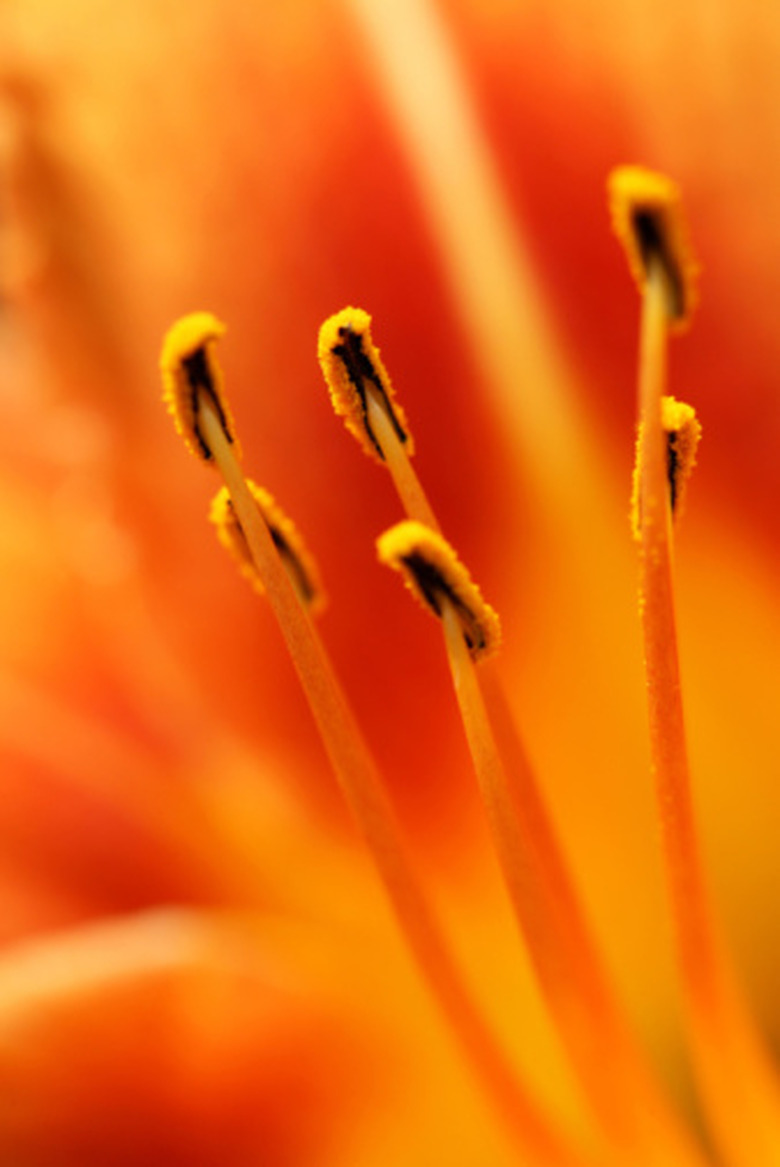What Is The Function Of The Anther On A Flower?
The anther of a flower is a structure in the stamen, the male part of a flower. Not all flowers have stamens. The anther of a flower is vital for plants that reproduce sexually through the process of pollination.
Stamen Function
Stamen Function
The stamen is made up of the filament and anther. The function of the filament is to keep the anther connected to the flower and make it accessible to pollination vectors. Pollen is produced and then released through the anther to pollination vectors like the wind or animals.
The vector then transfers the pollen onto the pistil, the female part of a flower, where pollination begins. Perfect flowers are those that have both male and female parts (both a stamen and a pistil), and imperfect flowers are those that have either male or female parts (a stamen or a pistil, but not both).
Identifying the Anther
Identifying the Anther
The anther is a bulbous structure covered in yellow pollen when looking at a flower in full bloom. Stamen and anther size will vary from flower to flower, depending on the pollination vector it has evolved alongside. For example, lilies (Lilium spp.) have relatively long filaments and prominent anthers where the pollen easily rubs off, making it easy to deliver it to their insect pollinators.
In perfect flowers, typically, the central structure is one or a cluster of pistils with the stamens surrounding the pistil. In imperfect flowers, the male flowers, like kiwifruit (Actinidia deliciosa), have only stamens and no pistils. Female kiwifruit flowers are an exception because they have both pistils and stamens, but the anthers don't produce functioning pollen.
Anther Morphology
Anther Morphology
Anthers are made up of two structures called thecae. The thecae (singular: theca) are attached to the filament through a tissue called the connective. Each theca contains two microsporangia (singular: microsporangium), which typically fuse into one chamber called a locule. Pollen grains are produced inside the microsporangia.
The majority of flowers are dithecal, meaning their anthers have two thecae and four microsporangia. Few plants, mainly those in the canna-lily (Cannaceae) and mallow (Malvaceae) families, are monothecal, meaning their anthers only have one theca and two microsporangia.
Orchids (Orchidaceae) are unusual in their anther development. Orchid anthers are called pollinium, which means all the pollen grains of their thecae are joined together, forming a singular mass.
Anther Attachment
Anther Attachment
Anthers are attached to filaments in different ways. Most anthers are connected at their base to the apex of the filament; this is called basifixed. When the filament is attached to the back of the anther near the base, this is called subbasifixed. Dorsified attachment is where the filament is connected to the center back of the anther.
All three types of anther attachment can be either versatile or fixed. Versatile attachments mean that the anther can freely pivot around the point of connection. When touched by a pollinator, freely moving anthers may facilitate the transfer of pollen to a pollination vector more efficiently.
Anther and Pollen Development
Anther and Pollen Development
The microsporangia contain a column of cells called microspore mother cells. These cells are surrounded by a tissue called the tapetum. While the anther develops, the microspore mother cells go through a process called meiosis, which splits the mother cell into four haploid microspores. The haploid microspores undergo mitotic division to form a mature pollen grain.
Multiple layers surround each pollen grain. The outermost layer, called the exine, is thought to be formed from the tapetum. The exine contains numerous macromolecules – one of these is sporopollenin, a highly durable structure unlike anything else that protects the pollen grain. The innermost layer is called the intine and is produced by the pollen grain itself.
Mature Pollen Grains and Pollination
Mature Pollen Grains and Pollination
Pollen grains contain a generative cell and a vegetative cell. The generative cell produces the sperm cells. After the pollen grain leaves the anther and reaches the stigma of a female flower, pistil pollination is triggered. During pollination, the vegetative cell forms the pollen tube, which the sperm cells use to travel down the style to the flower's ovaries, where it combines with the ovules, completing the pollination process.
References
- National Parks Service: Lilies at the Limit: Pollination Services and the Distribution of Erythronium Montanum
- Te Ara: Male and Female Flowers – Kiwifruit
- Frontiers in Materials: Sporopollenin, the Least Known Yet Toughest Natural Biopolymer
- KidsGardening.org: Imperfect Flowers: A Design for Genetic Diversity
Cite This Article
MLA
Jerrett, Adrianne. "What Is The Function Of The Anther On A Flower?" sciencing.com, https://www.sciencing.com/what-is-the-function-of-the-anther-on-a-flower-12521584/. 30 September 2021.
APA
Jerrett, Adrianne. (2021, September 30). What Is The Function Of The Anther On A Flower?. sciencing.com. Retrieved from https://www.sciencing.com/what-is-the-function-of-the-anther-on-a-flower-12521584/
Chicago
Jerrett, Adrianne. What Is The Function Of The Anther On A Flower? last modified March 24, 2022. https://www.sciencing.com/what-is-the-function-of-the-anther-on-a-flower-12521584/
